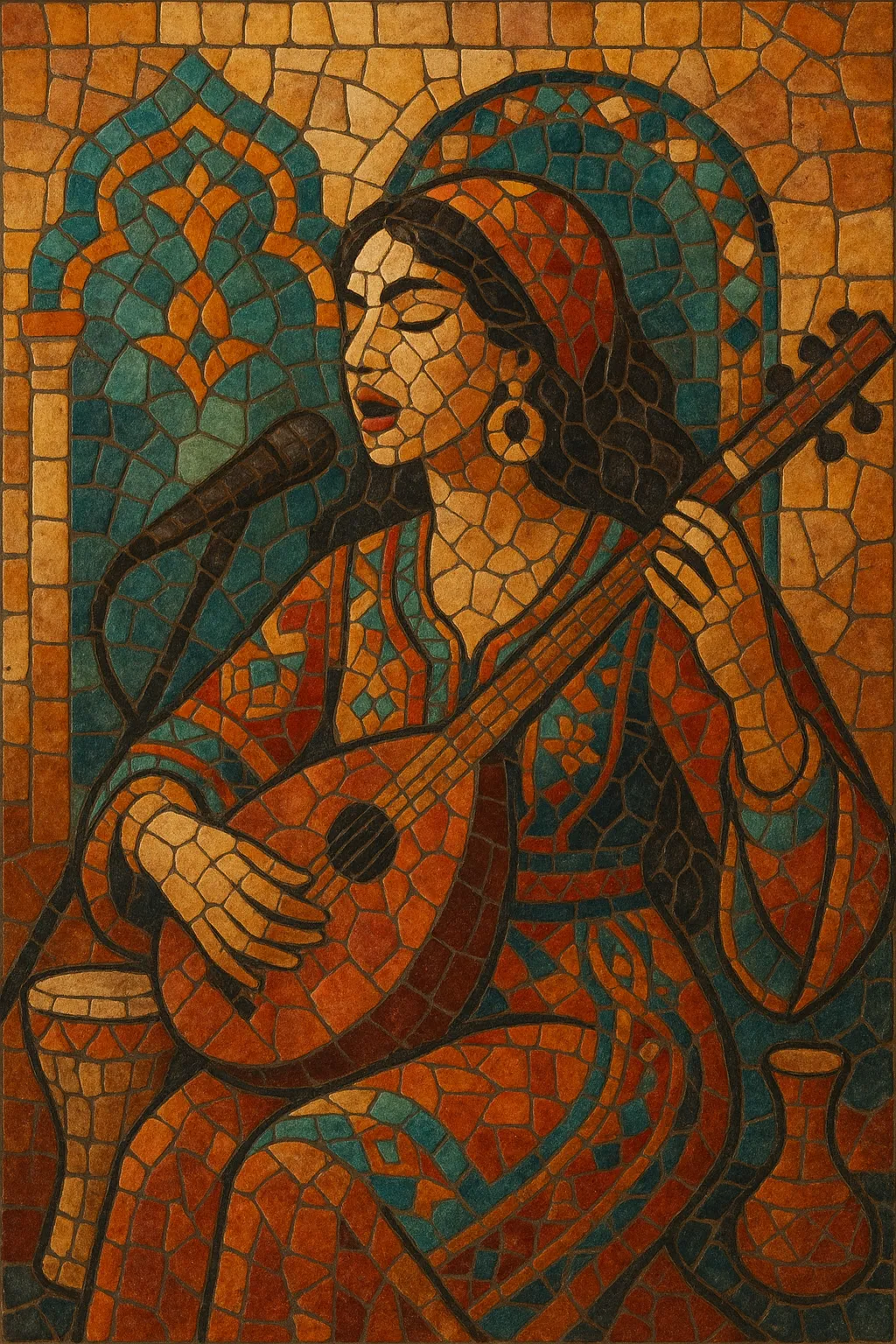Moroccan pop is contemporary, radio‑friendly music from Morocco that blends North African rhythms and modes with global pop craft. It draws on chaabi street grooves, gnawa bass patterns, and Andalusian ornamentation while embracing glossy production, catchy toplines, and dance‑floor energy.
Sung primarily in Moroccan Arabic (Darija), it often weaves in French, Standard Arabic, Amazigh (Tamazight), and occasional English phrases. The sound palette ranges from darbuka, bendir, and qraqeb to modern drum machines, synths, and Auto‑Tune, yielding sleek hooks that sit comfortably between Arab pop, French pop, R&B, hip hop, EDM, and, more recently, reggaeton and Afro‑leaning rhythms.
Moroccan popular song took shape through earlier figures and formats on state radio and TV, where chaabi, al-âla (Andalusian classical), and gnawa informed mainstream taste. Singers such as Samira Said and Latifa Raafat helped carry Moroccan repertoire into broader Arab-pop circuits, setting melodic and linguistic precedents (Darija diction, Andalusian ornaments) that later pop acts would refine.
With satellite TV, regional talent shows, and a growing diaspora ecosystem (notably in France, Belgium, and the Netherlands), Moroccan artists adopted contemporary pop production—sleek drums, synths, and R&B/hip-hop inflections—without abandoning local rhythmic DNA. Producers and songwriters with international experience brought world-class arrangement and mixing to Moroccan material.
YouTube and streaming platforms accelerated the rise of stars whose hits traveled beyond the Maghreb. Artists folded in EDM drops, trap drums, and reggaeton dembow, while maintaining Darija hooks and North African modes. High-impact singles, glossy videos, and cross-border collaborations with French rap/R&B and pan-Arab pop placed Moroccan pop in regular regional rotation.
Moroccan pop continues to diversify: Afro-fusion grooves, Latin crossover, and club-forward production sit alongside ballads steeped in Andalusian/chaabi sensibilities. Bilingual and trilingual lyrics are common, and social media-driven rollouts (short-form video, challenge-friendly hooks) help songs break internationally while remaining grounded in Moroccan identity.


